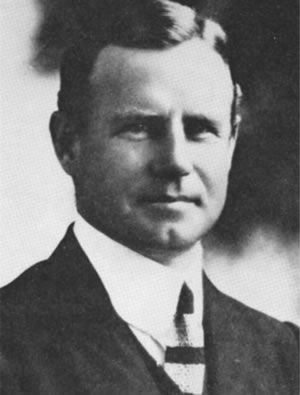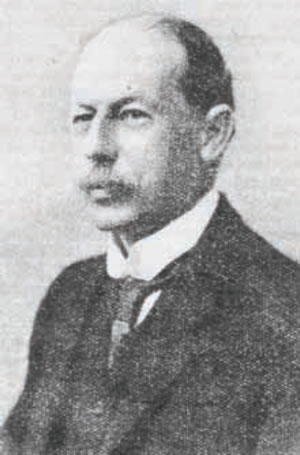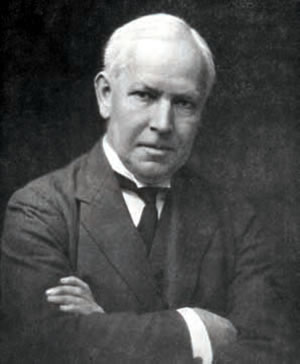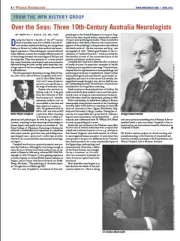Original article by Mervyn J. Eadie, AO, MD, PhD, FROM THE WFN HISTORY GROUP, published 30 May 2012 in World Neurology Vol 27 No. 2
During the final two decades of the 19th century three Australian men, born within a decade of one another, undertook the long sea voyage from Sydney to Britain to further their medical and neurological experience. Their subsequent careers followed rather different courses that manifest different patterns of interchange between the neurologies of Europe and the antipodes. They were pioneers of a career pattern that many Australian neurologists and neuroscientists followed during the 20th century while Australian neurology matured and increasingly became educationally self-sufficient.

Alfred Walter Campbell
COURTESY MRS. V. HOPE
The first-generation Australians George Edward Rennie (1861-1923), Alfred Walter Campbell (1868-1937), and Grafton Elliot Smith(1871-1937) were all educated in New South Wales to the stage of university entry. Rennie, who was born in Sydney, took a BA degree from the University of Sydney because no Australian university medical course was available at the time and then sailed to London in 1883. He graduated with an MB in 1887 and with an MD a year later. After returning to Sydney, he worked as a physician and pathologist. In 1898, he again sailed to London, acquiring further neurological knowledge at Queen Square and qualification as a member of the Royal College of Physicians. Returning to Sydney, he achieved a considerable local reputation as a physician with major neurological interests, publishing some neurological case reports and review-type articles. However, his career had little international neurological impact.

George Edward Rennie
REPRODUCED WITH PERMISSION FROM MEDICAL JOURNAL OF AUSTRALIA
Campbell was born on a pastoral property near present-day Canberra. Although he was young enough to enter the new Sydney University medical course, he sailed to Britain in 1886 and graduated MB ChM (Edinburgh) in 1889. He spent 2 years gaining experience at Queen Square, in various British mental asylums, in Prague, and in Vienna with Baron Richard von Krafft-Ebing. His thesis, "The pathology of alcoholic insanity," brought him an Edinburgh MD.
For 13 years, Campbell was medical officer and pathologist to the Rainhill Asylum in Liverpool, England. In that time, he published a substantial number of major neuropathological studies. These included his collaboration with Henry Head on the famous investigation of the pathology of herpes zoster that defined the distribution of the dermatomes and his great monograph of 1905, "Histological Studies of the Localisation of Cerebral Function," which provided the first detailed account of the cytoarchitectonics of the primate and human cerebral cortex.
Campbell later returned to Australia after an absence of nearly 20 years. He spent the remainder of his life in Sydney practising clinical neurology. Others had pre-empted him for appointments in neuropathology and psychological medicine. Campbell published further neuropathological and neurohistological studies of originality and merit, but his career in Australia, distinguished enough though it was, did not fulfil his earlier outstanding promise. He had been away from his homeland for too long before returning.

Sir Grafton Elliot Smith
REPRODUCED WITH PERMISSION FROM THE UNIVERSITY OF SYDNEY
Smith was born in the provincial town of Grafton. He undertook the Sydney medical course and then spent several years carrying out neuroanatomical studies in that University's anatomy department, gaining an MD.
With a scholarship, he sailed from Sydney to Britain, subsequently doing further research in the Cambridge anatomy department before occupying, successively, chairs of anatomy at Cairo, Egypt; Manchester, England; and University College, London. During his career, he was responsible for a great deal of anthropological, neuroanatomical, and paleopathological research, and collaborated with Dr William H.R. Rivers in work on psychological trauma.
Smith also was involved in the Piltdown man affair. He was one of several authorities who accepted that a skull and jawbone found in 1912 in a gravel pit in East Sussex, England, were fossil remains of a hitherto unrecognized human ancestor; 40 years later they were proved to be part of a deliberate hoax. Nonetheless, Smith proved to be a very considerable figure in the Egyptology, anthropology, and neuroanatomy of his time, a fellow of the Royal Society, and a knight. On two occasions, in 1914 and 1924, he returned to Australia for visits, but never again lived in his homeland.
Most Australian neurologists in at least the first two-thirds of the 20th century tended to follow training and career patterns resembling that of Rennie. A few resembled Smith's, and even fewer, Campbell's. Few attained such great international scientific distinction as Campbell or Smith. ■
DR. EADIE is emeritus professor of clinical neurology and neuropharmacology at the University of Queensland and honorary consultant neurologist at the Royal Brisbane and Women's Hospital, both in Brisbane, Australia.








